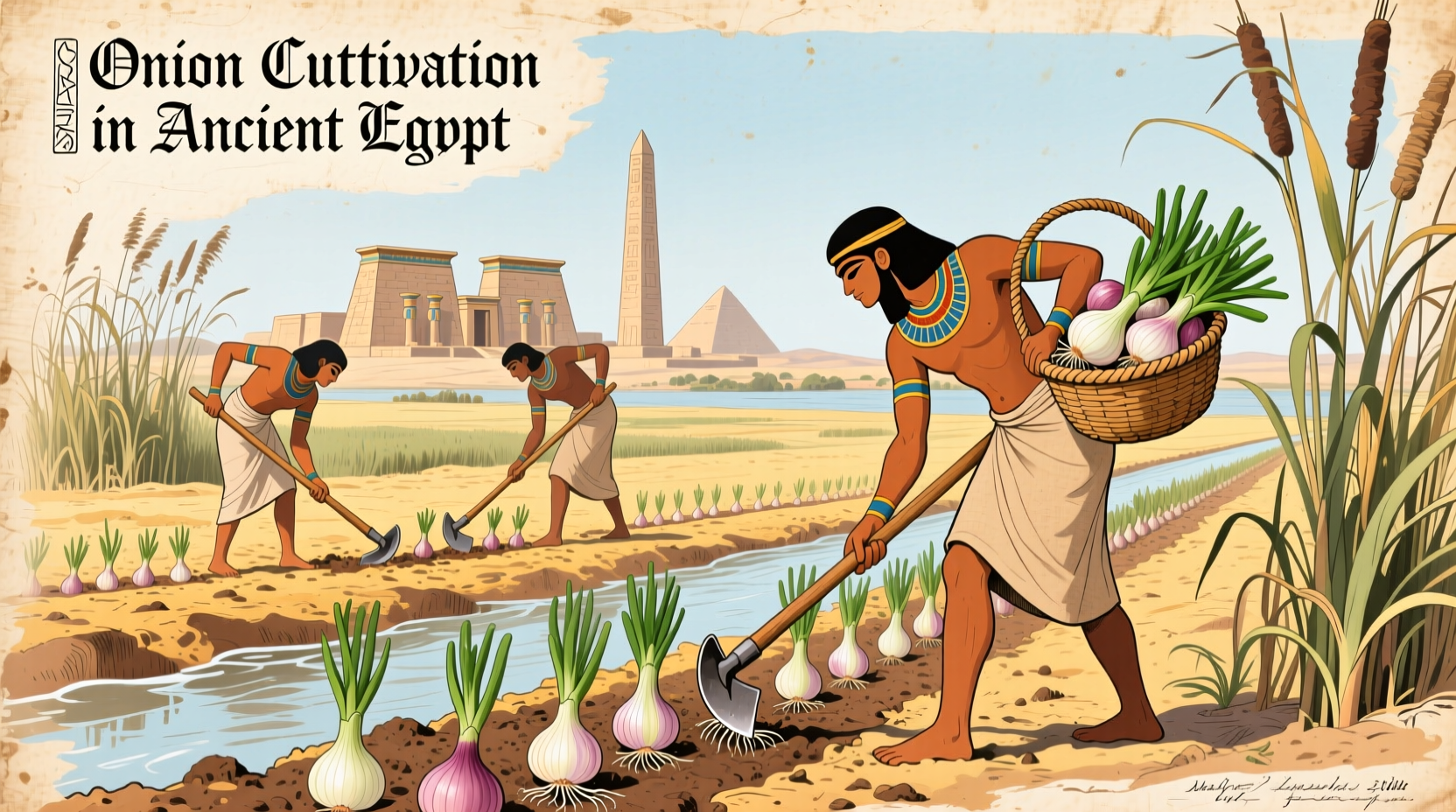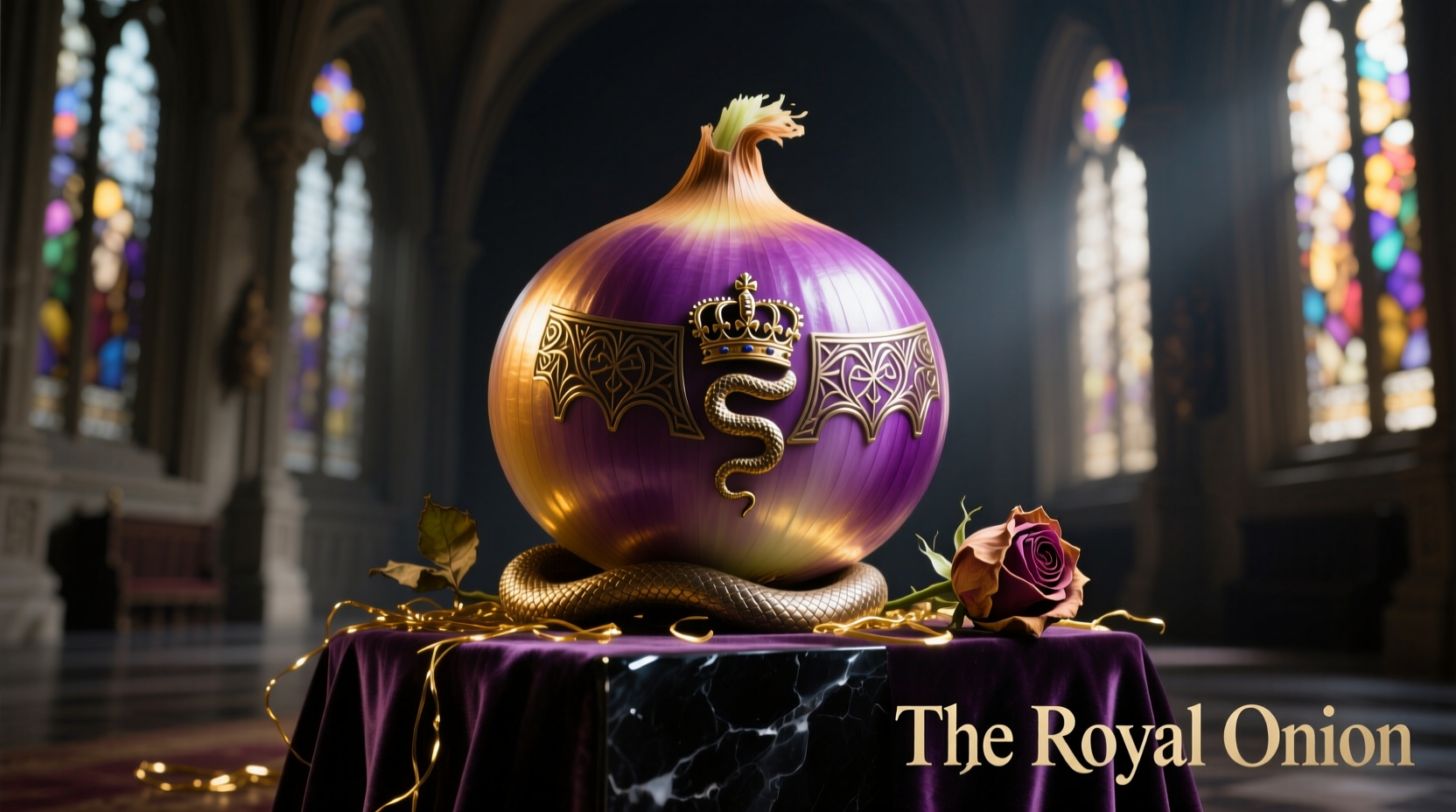The term "the royal onion" doesn't refer to a specific onion variety recognized by agricultural authorities or horticultural societies. Instead, it likely stems from historical connections between onions and royalty in ancient civilizations, particularly in Egypt where onions held sacred status and were found in pharaohs' tombs. Modern premium onion varieties like Ailsa Craig and Copra are sometimes marketed with "royal" descriptors due to their exceptional quality.
Ever wondered if there's truly such a thing as the royal onion that deserves its majestic name? You're not alone. Thousands search for this mysterious ingredient each month, hoping to discover a premium variety worthy of kings and queens. Let's cut through the confusion and reveal what actually makes certain onions worthy of royal treatment in today's culinary world.
Why the Confusion Around Royal Onions Exists
"Royal onion" isn't an officially recognized cultivar in agricultural databases or seed catalogs. The confusion typically arises from three sources:
- Historical references to onions in royal contexts, particularly in ancient Egypt
- Marketing terminology used by specialty food producers for premium varieties
- Mishearing "royal honey" (a popular wellness product) as "royal onion"
Understanding this distinction is crucial for home cooks and culinary professionals seeking authentic ingredients rather than falling for misleading marketing claims.
The True Royal Connection: Onions in Ancient Civilizations
While no single "royal onion" variety exists today, onions have held positions of honor throughout history. Archaeological evidence from the Egyptian pyramids reveals onions' sacred status in pharaonic culture:
| Civilization | Historical Evidence | Royal Significance |
|---|---|---|
| Ancient Egypt | Onions found in pharaohs' tombs including Ramses IV | Symbolized eternity; used in oaths; placed in mummy wrappings |
| Ancient Rome | References in Pliny the Elder's Natural History | Considered food of the gods; used in medicinal preparations for emperors |
| Mughal Empire | Recipes in Nuskha-i-Shahjahani imperial cookbook | Special varieties cultivated exclusively for royal kitchens |
According to research published by the British Museum, onions were so valued in ancient Egypt that workers building the pyramids received daily onion rations. The concentric layers were believed to symbolize eternal life, making them appropriate offerings for royalty and religious ceremonies.

Modern Premium Onion Varieties Worthy of Royal Treatment
While no officially designated "royal onion" exists, several premium varieties command respect in professional kitchens and gourmet markets. These onions earn their status through exceptional flavor profiles, storage capabilities, and culinary versatility:
Ailsa Craig: The Gourmet's Choice
This Scottish heirloom variety, developed in the 19th century, produces massive, sweet bulbs perfect for caramelizing. Its mild flavor and minimal pungency make it a favorite among chefs preparing refined dishes. Unlike standard yellow onions, Ailsa Craig maintains its sweetness even when raw, making it ideal for salads and salsas where harsh onion flavors would dominate.
Copra: The Storage Champion
Developed by the USDA and released in 1984, Copra onions offer exceptional storage capabilities while maintaining flavor integrity. According to agricultural research from University of Minnesota Extension, properly stored Copra onions can maintain quality for 10-12 months, far exceeding standard varieties. This longevity made them particularly valuable in historical contexts where fresh produce wasn't readily available year-round.
Vidalia and Other Sweet Onions
While Vidalia onions have legal protection as a geographical indication (like Champagne), other sweet varieties like Walla Walla and Maui share similar characteristics. These onions develop their signature sweetness due to low sulfur content in specific growing regions. The USDA's Vidalia Onion Act strictly regulates which onions can bear the Vidalia name, ensuring quality control for consumers.
How to Identify Premium Onions at Market
When shopping for high-quality onions that deserve the "royal" treatment in your cooking, look for these characteristics:
- Firmness: Premium onions should feel solid with no soft spots or indentations
- Skin condition: Dry, papery skin without mold or excessive dirt
- Neck closure: Tightly closed neck indicates proper curing and longer storage life
- Weight: Heavier onions for their size typically have higher moisture content and better flavor
Professional chefs recommend avoiding onions with green sprouts, as this indicates aging and diminished flavor quality. For the sweetest possible flavor, purchase onions in season—typically summer through early fall for most sweet varieties.
Preserving Onion Heritage: Heirloom Varieties at Risk
While commercial agriculture focuses on a handful of standard varieties, numerous heirloom onions face extinction. Organizations like Seed Savers Exchange document over 200 onion varieties, yet fewer than 20 dominate supermarket shelves. This genetic narrowing represents a significant loss of culinary diversity that once provided regional specialties worthy of royal tables.
According to research from the Food and Agriculture Organization, approximately 75% of plant genetic diversity has been lost as farmers worldwide shifted to standardized, high-yield varieties. Supporting local farmers who grow heirloom onions helps preserve this culinary heritage and ensures future generations can access the same diverse flavors enjoyed by historical royalty.
Using Premium Onions in Royal-Worthy Dishes
When working with high-quality onions, proper preparation techniques maximize their inherent flavors without overwhelming other ingredients:
- Caramelization: Cook slowly over medium-low heat for 30-40 minutes to develop deep sweetness without bitterness
- Raw applications: Soak sliced sweet onions in ice water for 15 minutes to reduce sharpness while maintaining crisp texture
- Layering flavors: Add onions at different cooking stages—some early for depth, some later for freshness
Professional chefs note that premium varieties like Ailsa Craig require less added sugar during caramelization compared to standard yellow onions, allowing their natural sweetness to shine through without additional ingredients.
Separating Fact from Fiction: Common Royal Onion Myths
Several persistent myths surround the concept of royal onions. Let's examine the facts:
- Myth: "Royal onion" is a protected cultivar like Vidalia onions Fact: No agricultural authority recognizes "royal onion" as a distinct variety
- Myth: Ancient royalty exclusively ate a special onion variety Fact: Historical evidence shows royalty consumed the same varieties as commoners, but in greater quantities
- Myth: "Royal onion" supplements offer special health benefits Fact: No scientific evidence supports unique health properties beyond standard onions
The USDA's Agricultural Research Service confirms that all onion varieties share similar nutritional profiles, with minor variations in flavonoid content based on color.











 浙公网安备
33010002000092号
浙公网安备
33010002000092号 浙B2-20120091-4
浙B2-20120091-4